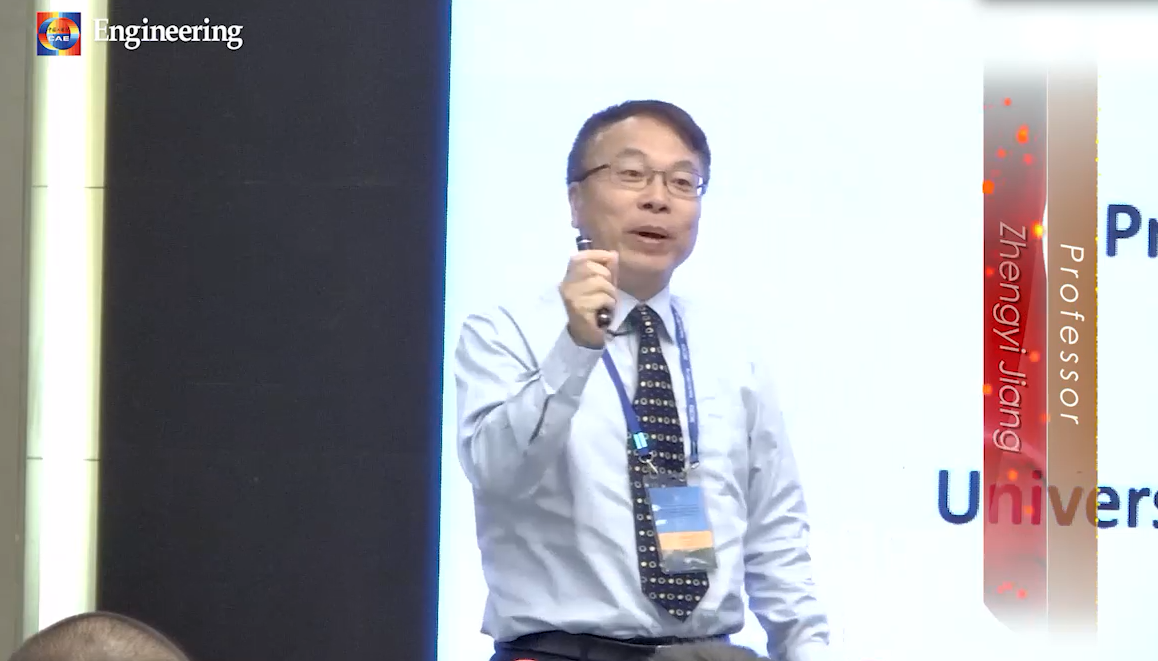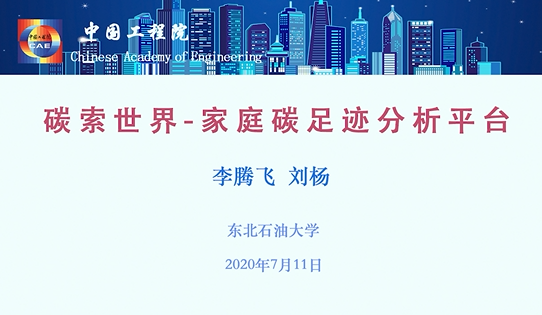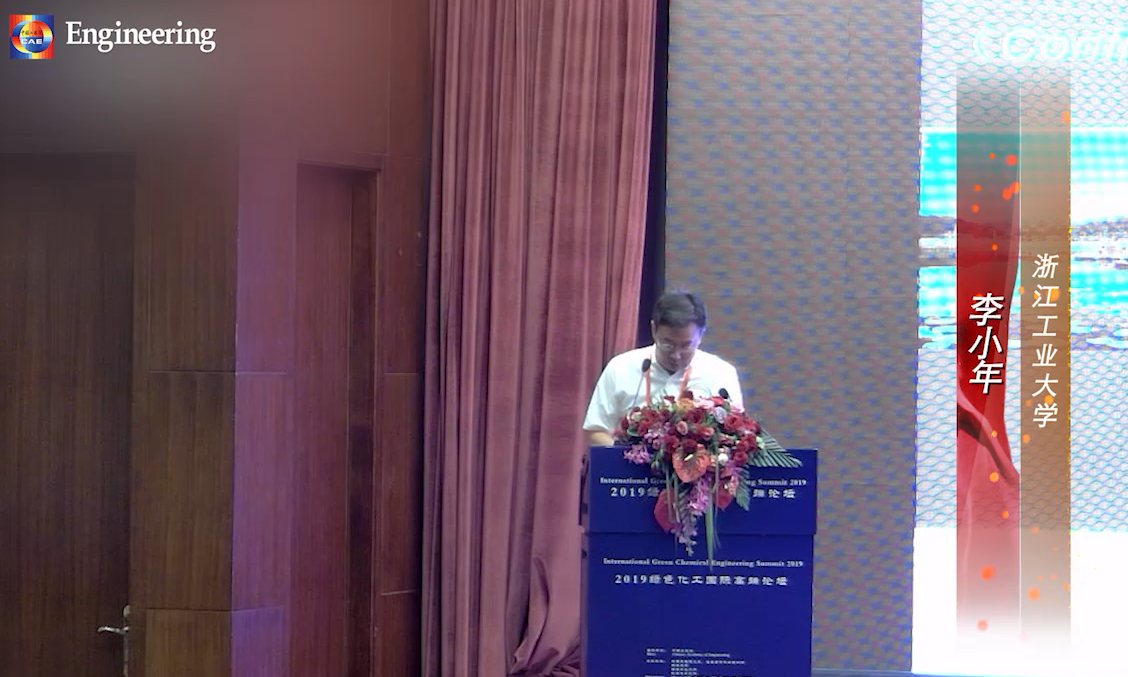Search scope:
排序: Display mode:
Li Siguang and China's Big Discovery of Petroleum
Zhao Wenjing
Strategic Study of CAE 2005, Volume 7, Issue 2, Pages 26-34
Keywords: Li Siguang China's oil resource China's big discovery and development of petroleum
Zhao Wenjin
Strategic Study of CAE 2009, Volume 11, Issue 6, Pages 4-15
According to the experience and problems of seismic monitoring and earthquake prediction for many years in China, it was discussed the earthquake mechanism, preliminary methods for prediction research and the mechanism and miss report of Wenchuan Earthquake, analyzed prediction precursor of short-term and impending earthquake, seismometry application limitation and ground stress transfer and track, and put forward 9 suggestions for future earthquake prediction.
Keywords: Wenchuan Earthquake earthquake prediction ground stress Li Siguang
Double-blockchain Assisted Secure and Anonymous Data Aggregation for Fog-enabled Smart Grid Article
Siguang Chen, Li Yang, Chuanxin Zhao, Vijayakumar Varadarajan, Kun Wang
Engineering 2022, Volume 8, Issue 1, Pages 159-169 doi: 10.1016/j.eng.2020.06.018
As a future energy system, the smart grid is designed to improve the efficiency of traditional power systems while providing more stable and reliable services. However, this efficient and reliable service relies on collecting and analyzing users’ electricity consumption data frequently, which induces various security and privacy threats. To address these challenges, we propose a double-blockchain assisted secure and anonymous data aggregation scheme for fog-enabled smart grid named DA-SADA. Specifically, we design a three-tier architecture-based data aggregation framework by integrating fog computing and the blockchain, which provides strong support for achieving efficient and secure data collection in smart grids. Subsequently, we develop a secure and anonymous data aggregation mechanism with low computational overhead by jointly leveraging the Paillier encryption, batch aggregation signature and anonymous authentication. In particular, the system achieves fine-grained data aggregation and provides effective support for power dispatching and price adjustment by the designed double-blockchain and two-level data aggregation. Finally, the superiority of the proposed scheme is illustrated by a series of security and computation cost analyses.
Keywords: Blockchain Fog computing Homomorphic encryption Smart grid Anonymity
Incentive-Aware Blockchain-Assisted Intelligent Edge Caching and Computation Offloading for IoT Article
Qian Wang, Siguang Chen, Meng Wu
Engineering 2023, Volume 31, Issue 12, Pages 127-138 doi: 10.1016/j.eng.2022.10.014
The rapid development of artificial intelligence has pushed the Internet of Things (IoT) into a new stage. Facing with the explosive growth of data and the higher quality of service required by users, edge computing and caching are regarded as promising solutions. However, the resources in edge nodes (ENs) are not inexhaustible. In this paper, we propose an incentive-aware blockchain-assisted intelligent edge caching and computation offloading scheme for IoT, which is dedicated to providing a secure and intelligent solution for collaborative ENs in resource optimization and controls. Specifically, we jointly optimize offloading and caching decisions as well as computing and communication resources allocation to minimize the total cost for tasks completion in the EN. Furthermore, a blockchain incentive and contribution co-aware federated deep reinforcement learning algorithm is designed to solve this optimization problem. In this algorithm, we construct an incentive-aware blockchain-assisted collaboration mechanism which operates during local training, with the aim to strengthen the willingness of ENs to participate in collaboration with security guarantee. Meanwhile, a contribution-based federated aggregation method is developed, in which the aggregation weights of EN gradients are based on their contributions, thereby improving the training effect. Finally, compared with other baseline schemes, the numerical results prove that our scheme has an efficient optimization utility of resources with significant advantages in total cost reduction and caching performance.
Keywords: Computation offloading Caching Incentive Blockchain Federated deep reinforcement learning



Li Jinbo: Underground In-situ Rock Mass Information Technology (2021-8-19)
17 Oct 2021
Keywords: 国际工程


Li Aihua: Development Trends and Suggestions of Nucleic Acid Vaccines (2021-9-3)
15 Oct 2021
Keywords: 医学

Li Tengfei: Carbon Cable World - Household Carbon Footprint Analysis Platform (2020-7-11)
19 May 2022
Keywords: 环境

Li Xiaonian: Bionic Strategy to Build Catalytic Reaction Microenvironment (2019.5.24)
22 Apr 2021
Keywords: 绿色化工

Li Yu: The History and Development of Medicinal Bacteria in China (2019-9-19)
李玉(院士)
20 Jan 2021
Keywords: 农业科学
Enhanced electrokinetic remediation of chromium-contaminated soil using approaching anodes
Shucai LI, Tingting LI, Gang LI, Fengmei LI, Shuhai GUO
Frontiers of Environmental Science & Engineering 2012, Volume 6, Issue 6, Pages 869-874 doi: 10.1007/s11783-012-0437-4
Keywords: approaching anodes chromium-contaminated soil electrokinetics chromium fractionation
Title Author Date Type Operation
scientific thinking of earthquake prediction from the miss report of Wenchuan Earthquake—re-discussing LiSiguang’s earthquake prediction thought
Zhao Wenjin
Journal Article
Double-blockchain Assisted Secure and Anonymous Data Aggregation for Fog-enabled Smart Grid
Siguang Chen, Li Yang, Chuanxin Zhao, Vijayakumar Varadarajan, Kun Wang
Journal Article
Incentive-Aware Blockchain-Assisted Intelligent Edge Caching and Computation Offloading for IoT
Qian Wang, Siguang Chen, Meng Wu
Journal Article
Jian Li:iScience and Interdisciplinary Research (2020-4-2)
18 Apr 2022
Conference Videos
Li Wei: Thinking and Practice of Agricultural Robots (2020-8-18)
17 Oct 2022
Conference Videos
Li Jinbo: Underground In-situ Rock Mass Information Technology (2021-8-19)
17 Oct 2021
Conference Videos
23 Apr 2021
Conference Videos
Li Aihua: Development Trends and Suggestions of Nucleic Acid Vaccines (2021-9-3)
15 Oct 2021
Conference Videos
Li Tengfei: Carbon Cable World - Household Carbon Footprint Analysis Platform (2020-7-11)
19 May 2022
Conference Videos
Li Xiaonian: Bionic Strategy to Build Catalytic Reaction Microenvironment (2019.5.24)
22 Apr 2021
Conference Videos
Li Yu: The History and Development of Medicinal Bacteria in China (2019-9-19)
李玉(院士)
20 Jan 2021
Conference Videos
Bai Li: Epidemic Characteristics and Population Exposure Risk of Newly Developed Drug-resistant Salmonella
17 Oct 2022
Conference Videos
Enhanced electrokinetic remediation of chromium-contaminated soil using approaching anodes
Shucai LI, Tingting LI, Gang LI, Fengmei LI, Shuhai GUO
Journal Article
Li Xiaohong: Promoting Engineering Science and Technology Innovation and Leading The Development of Emerging
7 Nov 2021
Conference Videos








